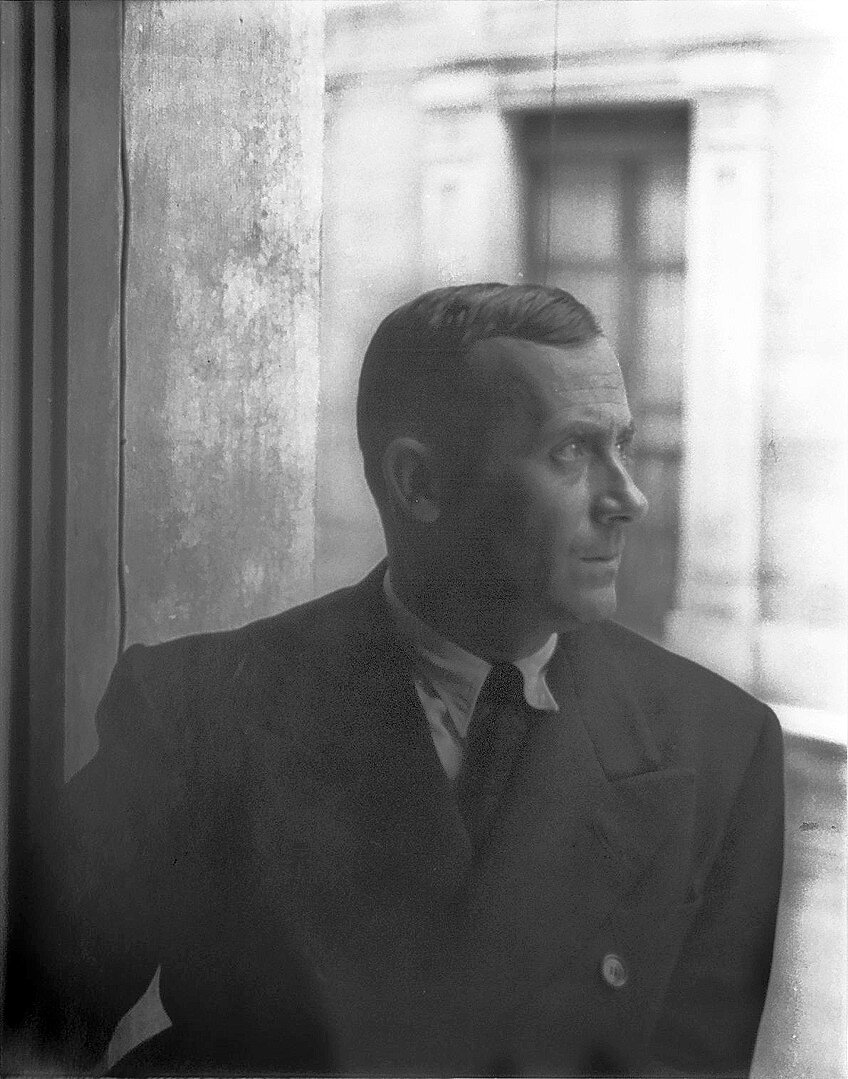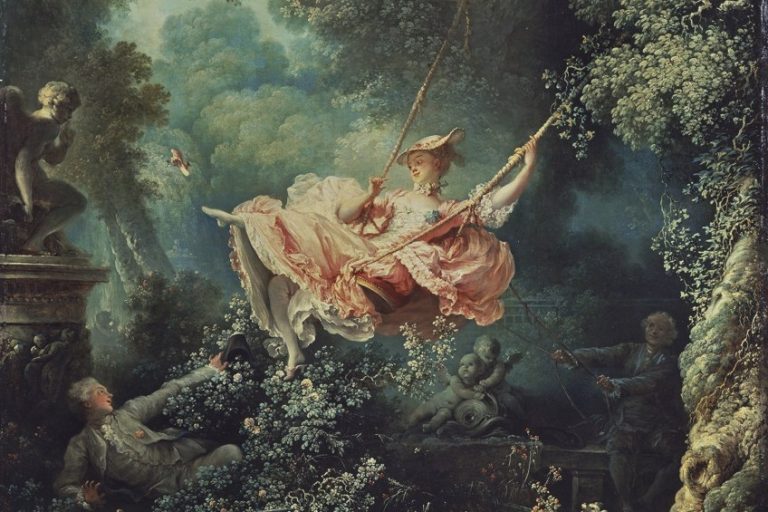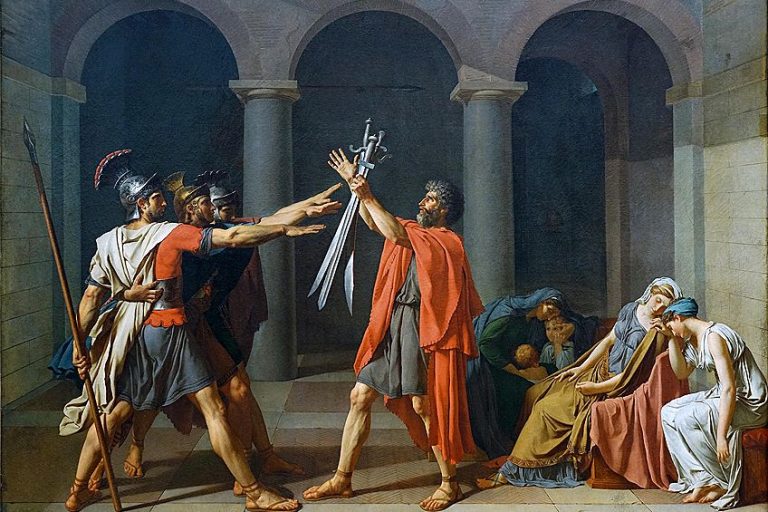“La Masia” by Joan Miró – A Rural Inspiration
La Masia, also known as The Farm, is a masterpiece by the renowned Catalan surrealist artist Joan Miró, painted between 1921 and 1922. This seminal work marks a pivotal moment in Miró’s career, bridging his early realist style with his later, more abstract and surrealist endeavors. Depicting the artist’s family farmhouse in Mont-roig del Camp, Spain, La Masia is a meticulous yet whimsical portrayal of rural life, blending naturalistic detail with symbolic elements. The painting is celebrated for its intricate composition, vibrant color palette, and the way it encapsulates Miró’s deep connection to his homeland, reflecting both the physical and metaphysical aspects of the Catalonian countryside.
Key Takeaways
- La Masia merges surrealism with realism, depicting rural life in Catalonia.
- The painting’s detailed representation showcases Miró’s artistic and emotional investment.
- Acquired by Hemingway, it highlights Miró’s figurative phase and artistic journey.
Historical Context
| Artist | Joan Miró (1893 – 1983) |
| Date Created | 1921 – 1922 |
| Medium | Oil on canvas |
| Genre | Landscape |
| Period/Movement | Surrealism |
| Dimensions (cm) | 123.8 x 141.3 |
| Series/Versions | None |
| Where Is It Housed? | National Gallery of Art, Washington, D.C., United States |
| What It Is Worth | Estimated at $40-50 million (value based on recent market trends) |
La Masia by Joan Miró is a masterful fusion of surrealism and realism, capturing the essence of rural life as experienced by the artist in Mont-roig del Camp. Painted between 1921 and 1922, this piece vividly portrays Miró’s family’s farm, reflecting his deep connection to the Catalan landscape and traditional agrarian lifestyle. The painting’s intricate details and vivid imagery provide a comprehensive snapshot of a farmer’s daily experience, blending personal memory with artistic innovation. La Masia stands out not only for its remarkable precision but also for the emotional depth Miró invested in its creation.

Influenced by magical thinking and alchemical symbolism, the artwork captures the mundane and the mystical in a single frame. This unique blend of motifs renders La Masia a visual testament to the convergence of Miró’s imaginative spirit and profound respect for his cultural heritage. Purchased by Ernest Hemingway, who was captivated by its meticulous execution, La Masia holds a notable place in art history. The work offers invaluable insight into Miró’s figurative stage, making it a cornerstone for understanding his artistic evolution. Its continued admiration today underscores the timeless nature of Miró’s vision and craftsmanship.
Joan Miró and Catalonia
Joan Miró was born in Barcelona, Catalonia, and his cultural identity plays a significant role in his art. Catalonia’s traditions, landscapes, and symbols are prevalent in his works. La Masia reflects the essence of rural Catalonia, capturing the rustic spirit and everyday life. The local elements in the painting go beyond mere representation. They embody Miró’s connection to his heritage, showing the vibrancy and simplicity of Catalan rural life.
This immersion in Catalonian culture provided a profound backdrop for many of his pieces.
Ernest Hemingway’s Involvement
Ernest Hemingway, the renowned American author, played a pivotal role in the life of La Masia. An admirer of Miró’s work, Hemingway purchased the painting, bringing it significant attention. His involvement went beyond mere acquisition; he wrote passionately about the artwork, which helped cement Miró’s reputation in the art world. Hemingway’s personal connection with the painting and his public admiration for Miró’s work introduced La Masia to a broader audience. This endorsement by a literary giant contributed to its historical and cultural significance, spanning artistic and literary domains.

Inception at Mont-Roig
The inception of La Masia occurred at Miró’s family farmhouse in Mont-Roig del Camp, a place that deeply inspired him. He began this artwork by working directly from the natural surroundings, capturing the essence of his environment with meticulous detail. The painting portrays various elements such as animals, plants, and farm equipment, reflecting the daily life at the farmhouse. Miró continued to work on La Masia after returning to Barcelona and finished it in Paris.
This process underscores the interplay between place, memory, and artistic creation in Miró’s oeuvre.
Analysis of La Masia
Joan Miró’s La Masia captures the essence of the artist’s family farm in Mont-roig, depicting an array of elements that speak to his personal and artistic journey. The painting integrates subject matter, use of color and texture, symbolism, and surrealism in a unique and compelling manner.
Subject Matter
La Masia, also known as The Farm, centers on the artist’s family’s agricultural homestead in Mont-roig. Miró meticulously details every aspect of the farm, from buildings to fauna and flora. The painting showcases the Mediterranean landscape with vivid precision. An imposing eucalyptus tree stands at the heart, surrounded by tools, animals, and structures, each rendered with remarkable clarity. These elements reflect Miró’s deep connection to his Catalonian roots and rural life. The attention to detail and comprehensive portrayal of farm life make La Masia a testament to Miró’s early artistic phase.
Use of Color and Texture
Miró’s use of color and texture in La Masia is striking. The painting features a bright Mediterranean sky that contrasts with the earthy tones of the land. This combination captures the brilliance of the region’s light and shadow play. The textures vary, with smooth skies juxtaposed against the rugged details of the farm.
Miró uses color not just decoratively but symbolically, highlighting key elements within the scene.
For example, the intense blue of the sky emphasizes the day’s clarity, while the tawny earth emphasizes the rustic and hardworking nature of the farm environment. This interplay of color and texture enhances the painting’s vibrancy and realism.
Symbolism of the Artwork
La Masia is rich with symbolic meaning. The detailed depictions transcend simple representation, hinting at deeper alchemical and philosophical concepts. Various elements can be interpreted through an alchemical lens, with roots in magical thinking.
Each object and figure holds potential symbolic significance. For instance, the imposing tree might represent life and growth, while animals and tools symbolize different aspects of rural life and labor. These symbols connect the physical farm to a broader, more mystical narrative. Miró’s integration of symbolism in this painting underlines his transition from figurative art to a more symbolic and abstract representation of his world.
Surrealism and The Farm
While La Masia is largely figurative, it includes elements that foreshadow Miró’s later embrace of surrealism. The painting’s intricate details and symbolic depth create a dreamlike quality that transcends mere representation. Miró’s careful integration of the real and the surreal allows The Farm to serve as a bridge between his early and later styles. The meticulous portrayal of everyday items coupled with their imbued symbolic meanings highlights this shift.
Through La Masia, Miró begins to explore the boundaries of reality and imagination, planting the seeds for his future surrealist works.
Legacy and Preservation
La Masia remains a landmark in modern art due to its distinctive blend of semi-Cubist realism and personal symbolism. Efforts to preserve and honor this masterpiece have been undertaken by various notable institutions and foundations.
Acquisition by the National Gallery of Art
In 1925, Ernest Hemingway purchased La Masia for his then-wife Hadley Richardson. Later, the artwork was donated to the National Gallery of Art in Washington, D.C. This acquisition ensured its preservation and accessibility to the public. Currently housed in the East Building, the painting is an integral part of the Gallery’s modern art collection. The National Gallery of Art undertakes meticulous conservation efforts to maintain its condition, guaranteeing that future generations can appreciate Miró’s significant work.

Mas Miró Foundation
The Mas Miró Foundation, located in Mont-roig del Camp, plays a critical role in preserving Miró’s legacy. The foundation is dedicated to maintaining the family farmhouse, which served as the inspiration for La Masia. It offers guided tours, educational programs, and exhibitions that delve into Miró’s connection with the region. The foundation also focuses on the conservation and restoration of the site to protect its historic and cultural value.
By doing so, it ensures that the inspirational context behind La Masia remains intact.
Influence on Modern Art
La Masia has had an enduring influence on modern art, particularly in how artists blend reality with abstraction. Miró’s incorporation of Catalán culture and universal symbols paved the way for new artistic expressions. Contemporary artists often draw inspiration from his work, acknowledging its role in the evolution of abstract and surrealist art movements. The painting’s mix of semi-Cubist styles and personal symbolism has become a reference point for studying the integration of local influences into broader, universal themes in art.

Joan Miró’s La Masia stands as a testament to his unique artistic vision, where meticulous attention to detail converges with surrealistic imagination. This iconic work not only captures the essence of the Catalonian landscape and rural life but also serves as a crucial link in Miró’s evolution as an artist. La Masia reflects his profound connection to his roots while hinting at the abstract and symbolic language that would come to define his later works. Today, this painting remains a celebrated piece in the annals of art history, illustrating the profound impact of personal and cultural heritage on the development of modern art.
Frequently Asked Questions
What Is the Significance of The Farm by Joan Miró?
The Farm is celebrated as a pivotal work in Joan Miró’s career. It marks the end of his figurative phase and the beginning of his distinct artistic language. The painting encapsulates his personal and emotional connection to his family’s property in Mont-roig del Camp, acting as a visual diary of his surroundings.
How Does The Farm Reflect Joan Miró’s Artistic Style?
The Farm features a blend of semi-Cubist and semi-realistic elements. The meticulous detail and symbolic representation of the farm’s elements showcase Miró’s tendency to merge reality with abstraction. This painting hints at his future exploration of surrealism and his unique approach to combining everyday objects with a sense of magical realism.
What Techniques Did Joan Miró Use in The Farm?
Joan Miró employed a combination of precise, almost meticulous brushwork with a semi-Cubist approach. This technique allowed him to create a detailed yet stylized depiction of the farm. His use of bold colors and intricate lines was intended to convey both the literal and symbolic aspects of each element in the painting.
What Influence Did The Farm Have on Joan Miró’s Later Works?
The Farm strongly influenced Miró’s later works by establishing his unique visual language. This painting’s balance of detail and abstraction can be seen in his subsequent pieces. It also laid the groundwork for Miró’s shifting focus towards surrealism and abstraction, which became defining characteristics of his later artistic endeavors.
Isabella studied at the University of Cape Town in South Africa and graduated with a Bachelor of Arts majoring in English Literature & Language and Psychology. Throughout her undergraduate years, she took Art History as an additional subject and absolutely loved it. Building on from her art history knowledge that began in high school, art has always been a particular area of fascination for her. From learning about artworks previously unknown to her, or sharpening her existing understanding of specific works, the ability to continue learning within this interesting sphere excites her greatly.
Her focal points of interest in art history encompass profiling specific artists and art movements, as it is these areas where she is able to really dig deep into the rich narrative of the art world. Additionally, she particularly enjoys exploring the different artistic styles of the 20th century, as well as the important impact that female artists have had on the development of art history.
Learn more about Isabella Meyer and the Art in Context Team.
Cite this Article
Isabella, Meyer, ““La Masia” by Joan Miró – A Rural Inspiration.” Art in Context. June 10, 2024. URL: https://artincontext.org/la-masia-by-joan-miro/
Meyer, I. (2024, 10 June). “La Masia” by Joan Miró – A Rural Inspiration. Art in Context. https://artincontext.org/la-masia-by-joan-miro/
Meyer, Isabella. ““La Masia” by Joan Miró – A Rural Inspiration.” Art in Context, June 10, 2024. https://artincontext.org/la-masia-by-joan-miro/.











